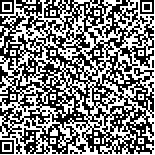| 引用本文: | 武东,汪晓娟,汪小五,汪小英,李亚,杨振峰,梁实慧.哌拉西林他唑巴坦与碳青霉烯类抗菌药物治疗产超广谱β-内酰胺酶大肠埃希菌感染的临床疗效对比[J].中国现代应用药学,2021,38(19):2411-2418. |
| WU Dong,WANG Xiaojuan,WANG Xiaowu,WANG Xiaoying,LI Ya,YANG Zhenfeng,LIANG Shihui.Clinical Efficacy Comparison Between Piperacillin-tazobactam and Carbapenem in the Treatment of Infection Caused by Extended-spectrum β-lactamase-producing Escherichia Coli[J].Chin J Mod Appl Pharm(中国现代应用药学),2021,38(19):2411-2418. |
|
| |
|
|
| 本文已被:浏览 1643次 下载 786次 |

码上扫一扫! |
|
|
| 哌拉西林他唑巴坦与碳青霉烯类抗菌药物治疗产超广谱β-内酰胺酶大肠埃希菌感染的临床疗效对比 |
|
武东1, 汪晓娟1, 汪小五2, 汪小英1, 李亚1, 杨振峰1, 梁实慧3
|
|
1.阜阳市人民医院药剂科, 安徽 阜阳 236000;2.阜阳市第二人民医院检验科, 安徽 阜阳 236000;3.皖南医学院药学院, 安徽 芜湖 241002
|
|
| 摘要: |
| 目的 探讨哌拉西林他唑巴坦(piperacillin-tazobactam,PTZ)与碳青霉烯类抗菌药物(carbapenem,CBP)治疗产超广谱β-内酰胺酶(extended-spectrumβ-lactamase,ESBL)大肠埃希菌感染的临床疗效、安全性和药物经济性,为遏制碳青霉烯类耐药细菌的增长提供可行性方案。方法 回顾性分析2019年9月—2021年1月阜阳市人民医院检出产ESBL大肠埃希菌,根据目标治疗采用PTZ和CBP分为PTZ组和CBP组,收集患者临床资料包括基础疾病、Charlson合并症评分、Pitt菌血症评分、PTZ的最小抑菌浓度(minimal inhibitory concentration,MIC)、14 d全因死亡率等,采用临床有效率和生存曲线评价2组临床疗效,不良反应发生率和严重程度评价2组治疗方案安全性,最小成本分析法评价2组治疗方案药物经济性,并探讨PTZ治疗失败的危险因素。结果 共收集268例患者,产ESBL大肠埃希菌从穿刺液(84例)、尿液(64例)、分泌物(61例)和血液(59例)4种标本类型中检出。与CBP组(n=70)相比,PTZ组(n=198)在临床有效率(76.26%vs 82.86%,P=0.252)、14 d全因死亡率(6.06%vs 11.43%,P=0.138)和药物不良反应发生率(4.54%vs 8.57%,P=0.230)方面,差异无统计学意义,而PTZ治疗方案较CBP治疗方案药品成本低(2 035.05元vs 3 250.19元,P<0.001);感染性休克(OR 34.161,95%CI 3.244~359.744,P=0.003)、Charlson合并症指数>3分(OR 1.260,95%CI 1.019~1.558,P=0.033)、CCr<30 mL·min-1(OR 3.159,95%CI 1.068~9.349,P=0.038)、PTZ MIC>4 μg·mL-1(OR 2.723,95%CI 1.238~5.993,P=0.013)、血流感染(OR 4.029,95%CI 1.652~9.827,P=0.002)是PTZ治疗失败的独立危险因素。结论 PTZ用于治疗包括血流感染在内的产ESBL大肠埃希菌感染是有效的,且不增加14 d全因死亡率,在获得满意的疗效的同时,可获得最佳的经济效果,但若患者合并以上5种危险因素时,建议调整为CBP或PTZ联合呼吸喹诺酮类或氨基糖苷类抗菌药物。 |
| 关键词: 哌拉西林他唑巴坦 碳青霉烯类抗菌药物 超广谱β-内酰胺酶 大肠埃希菌 血流感染 |
| DOI:10.13748/j.cnki.issn1007-7693.2021.19.012 |
| 分类号:R969.4 |
| 基金项目:白求恩医学科学研究基金(B19071EN) |
|
| Clinical Efficacy Comparison Between Piperacillin-tazobactam and Carbapenem in the Treatment of Infection Caused by Extended-spectrum β-lactamase-producing Escherichia Coli |
|
WU Dong1, WANG Xiaojuan1, WANG Xiaowu2, WANG Xiaoying1, LI Ya1, YANG Zhenfeng1, LIANG Shihui3
|
|
1.Department of Pharmacy, Fuyang People's Hospital, Fuyang 236000, China;2.Department of Clinical Laboratory, Fuyang Second People's Hospital, Fuyang 236000, China;3.Pharmacy School of Wannan Medical College, Wuhu 241002, China
|
| Abstract: |
| OBJECTIVE To explore the clinical efficacy, safety and drug economy of piperacillin-tazobactam(PTZ) and carbapenem(CBP) in the treatment of infections caused by extended-spectrum β-lactamase(ESBL)-producing Escherichia coli, to provide a feasible solution to curb the growth of carbapenem resistant bacteria. METHODS The samples of ESBL-producing Escherichia coli strains were detected from September 2019 to January 2021 by retrospective analysis in Fuyang People's Hospital. According to the target treatment of PTZ or CBP, there were divided into PTZ group and CBP group, the clinical date of underlying disease, Charlson's comorbidity index, Pitt bacteraemia score, minimal inhibitory concentration(MIC) of PTZ and 14-d all-cause mortality were collected. Clinical effective rate and survival curve were used to evaluate effectiveness of 2 groups, and the incidence and severity of adverse reactions were used to evaluate safety of 2 groups, and the pharmacoeconomics of two groups was evaluated with cost-minimization analysis. Meanwhile, the risk factors of treatment failure for PTZ were explored. RESULTS A total of 268 patients were isolated, ESBL-producing Escherichia coli were detected from 4 specimen types including pucture fluid(84 cases), urine(64 cases), secretion(61 cases) and blood (59 cases). There was no statistically significant difference in the success rate(76.26% vs 82.86%, P=0.252), 14 d all-cause mortalit(6.06% vs 11.43%, P=0.138) and the incidence of adverse reactions (4.54% vs 8.57%, P=0.230) between PTZ group(n=198 cases) and CBP group(n=70 cases), however, the drug cost of PTZ therapy was lower than that of CBP group(2 035.05 yuan vs 3 250.19 yuan, P<0.001). Septic shock (OR 34.161, 95%CI 3.244-359.744, P=0.003), Charlson's comorbidity index>3 points(OR 1.260, 95% CI 1.019-1.558, P=0.033), CCr<30 mL·min-1 (OR 3.159, 95% CI 1.068-9.349, P=0.038), MIC of PTZ>4 μg·mL-1(OR 2.723, 95% CI 1.238-5.993, P=0.013) and bloodstream infections(OR 4.029, 95% CI 1.652-9.827, P=0.002) remained associated with risk of PTZ treatment failure. CONCLUSION PTZ is not associated with increased 14 d mortality and may be an effective drug against infections caused by ESBL-producing Escherichia coli, including bloodstream infection, which can obtain satisfactory curative effect and the best economic effect. However, if patient combined with one of the above five risk factors, it recommend to adjust CBP, or PTZ combined with respiratory quinolone or aminoglycosides. |
| Key words: piperacillin-tazobactam carbapenem antibiotics extended-spectrum β-lactamase Escherichia coli bloodstream infection |
|
|
|
|
